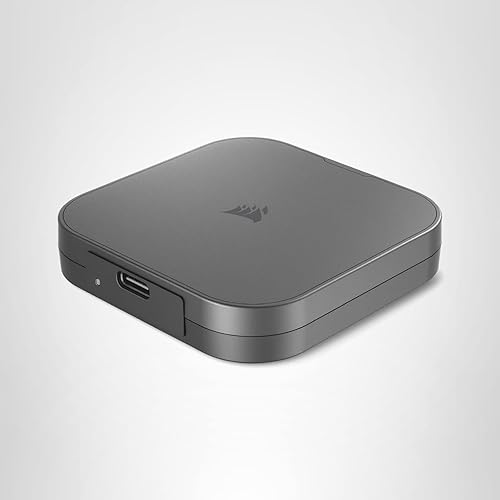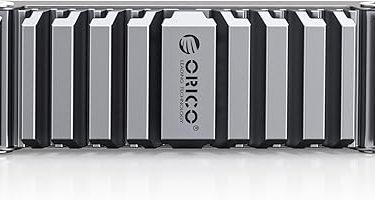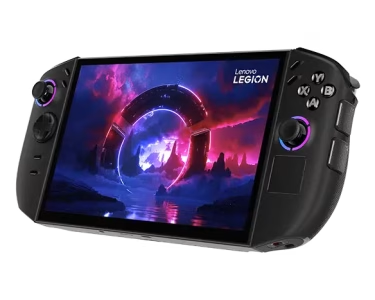These days, small, thin, and square SSDs appear to be popular, and Corsair is one of the companies that produces them the most. Take a look at the EX300U, a 10Gbps, less costly substitute for the USB4 (40Gbps) EX400U that I tested around six months ago.
Features
The EX300U is a 2.5-inch square, about 0.5 inches thick, with a 10Gbps USB drive within. Except for the model number on the back label, it looks exactly like the speedier EX400U. The same circular MagSafe magnet, which can be attached to numerous phones and other appropriate surfaces, is located on the rear. Yes, many amateur videographers use it as auxiliary storage.
The EX300U weighs only 1.4 ounces, making it noticeably lighter than the 1.8-ounce EX400U. That is the only significant difference. I felt the difference, but I was a little taken aback. Naturally, the NAND is 3D, and the controller is a Phison PS2217-17. Although Corsair didn’t specify if it was TLC or QLC, the minimum write rate in my tests was 450 MBps; thus, the native write rate isn’t terrible regardless of what it is—I assume it’s the most recent QLC.
A convenient short gray Type-C to Type-C cable with one connector slanted for a less noticeable connection to phones and other devices is included by Corsair. The EX300U has a three-year warranty, which is standard for external SSDs; nevertheless, the capacity of 250TBW (terabytes that may be written) per terabyte is a bit meager. However, it is unlikely that anyone will surpass that limit using a light-duty external 10Gbps USB SSD.
Although the EX400U is fast enough to handle some heavy-duty write loads, its three-year/250TBW guarantee is more worrisome.
What is the price of the EX300U?
There are three different capacities for the EX300U: 1TB/$100, 2TB/$180, and 4TB/$340. As of this writing, it is $10 less expensive than the 1TB EX400U and $20 less expensive than the 2TB and 4TB models.
Although a penny saved is a penny earned, considering the EX300U’s decreased performance, I genuinely hoped you would save a few more. Nevertheless, you might as well save what you can if you lack the speedier port necessary to benefit from a USB 3.2×2 or USB4 SSD.
What is the EX300U’s speed?
For a 10Gbps SSD, the EX300U performs admirably. Although its shape differs, it is similar in size and weight to the two 10Gbps thumb drives that are being compared in the charts: the Seagate Ultra Compact SSD and the SK Hynix Tube T31. It goes without saying that the EX300U is far slower than its 40Gbps sibling, the EX400U. Despite the drive’s inherent slowness for a USB4 SSD.
In any case, the EX300U comfortably outperformed the previously mentioned 10Gbps competitors in CrystalDiskMark 8’s sequential testing. All things considered, I thought the EX300U performed better than the competition.
One oddity was that when I connected the EX300U to my Thunderbolt 5 connection, CrystalDiskMark 8 would not operate. Despite creating the 64GiB file, the numbers remained at zero. As of this writing, Corsair has not identified the root cause of the problem; therefore, it is unclear if it was the BIOS, the SSD, or the Thunderbolt 5/USB4 implementation. All of my copy tests via Thunderbolt 5 were successful.
The EX300U also functioned as anticipated when connected to the 10Gbps and 20Gbps USB ports in all of the synthetic evaluations. For a 10Gbps SSD, the EX300U performs admirably. Although its shape differs, it is similar in size and weight to the two 10Gbps thumb drives that are being compared in the charts: the Seagate Ultra Compact SSD and the SK Hynix Tube T31.
It goes without saying that the EX300U is far slower than its 40Gbps sibling, the EX400U. Despite the drive’s inherent slowness for a USB4 SSD. In any case, the EX300U comfortably outperformed the previously mentioned 10Gbps competitors in CrystalDiskMark 8’s sequential testing.
Conclusion
For the majority of users and portable devices, the EX300U is more than fast enough, even though it is not as fast as its 40Gbps EX400U cousin. Additionally, albeit not as much as I would have hoped, it is less expensive than the 20/40Gbps competitors.
So, certainly, consider the EX300 if cost is a top priority or if you lack faster USB ports to utilize faster SSDs. However, if you want truly excellent small-and-square performance, choose the EX400U.





